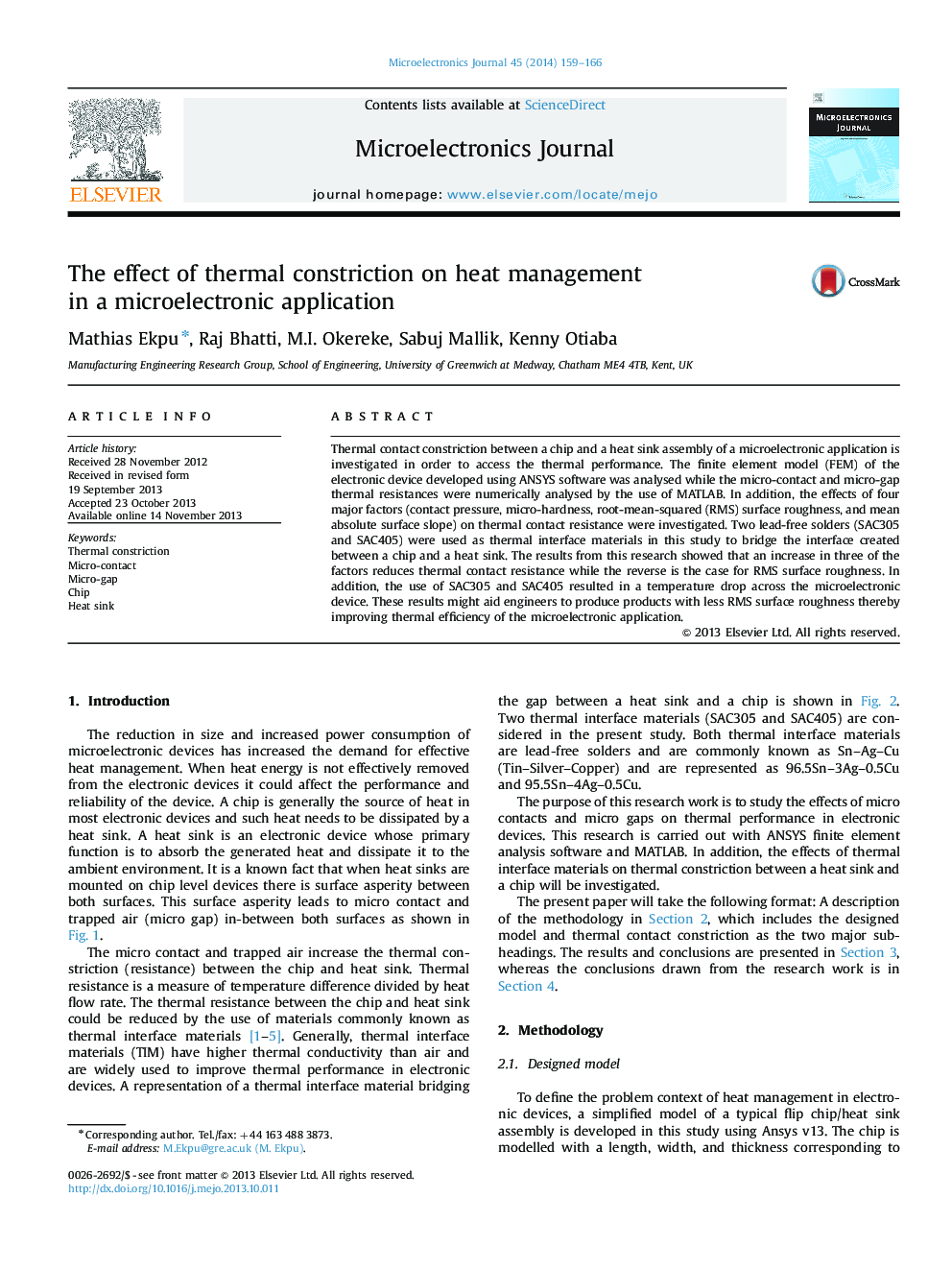| Article ID | Journal | Published Year | Pages | File Type |
|---|---|---|---|---|
| 547256 | Microelectronics Journal | 2014 | 8 Pages |
•Contact pressure and RMS surface roughness affect heat transfer in microelectronics.•SAC305 and SAC405 as thermal interface materials will improve thermal management.•Finite element method helps in understanding thermal challenges in microelectronics.•Mean absolute surface slope and micro-hardness affect heat transfer in electronics.
Thermal contact constriction between a chip and a heat sink assembly of a microelectronic application is investigated in order to access the thermal performance. The finite element model (FEM) of the electronic device developed using ANSYS software was analysed while the micro-contact and micro-gap thermal resistances were numerically analysed by the use of MATLAB. In addition, the effects of four major factors (contact pressure, micro-hardness, root-mean-squared (RMS) surface roughness, and mean absolute surface slope) on thermal contact resistance were investigated. Two lead-free solders (SAC305 and SAC405) were used as thermal interface materials in this study to bridge the interface created between a chip and a heat sink. The results from this research showed that an increase in three of the factors reduces thermal contact resistance while the reverse is the case for RMS surface roughness. In addition, the use of SAC305 and SAC405 resulted in a temperature drop across the microelectronic device. These results might aid engineers to produce products with less RMS surface roughness thereby improving thermal efficiency of the microelectronic application.
